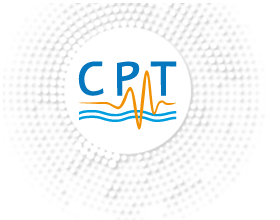Agenda
Mercredi 27 novembre 2019
PHYSICS and ASTROPHYSICS of COSMIC RAYS

Cosmic rays (CR) have a central position in many major astrophysical issues, from the solar system to galaxy clusters. They stand for a testimony on the conditions in the most extreme objects in the Universe and plays a key role in the physics and chemistry of the interstellar medium (ISM), with consequences ranging from star formation and galactic magnetic fields to the production of light elements. Moreover, the CR could carry information on Dark Matter.
The results of observations, accumulated during the past decade, have considerably transformed our knowledge of the CR physics. The level of detail and precision achieved in the direct measurements of CR by the PAMELA, AMS-02, Fermi or Voyager space missions bring remarkable constraints on the propagation models of Galactic CR. The observations from Kaskade-GRANDE and Auger from 10^15 to 10^20 eV enabled us to improve our knowledge on the Galactic-extragalactic transition and on the extreme energy particles. Moreover, if CR generates an incompressible background to neutrino astronomy experiments, the latter have in turn enabled us to measure an anisotropy in the flow of cosmic rays at small and large scales. Such a feature, that still remains to be understood, could notably be connected the microphysics of transport and the properties of the interstellar magnetic field. Finally, the observations of possible high-energy acceleration sites, from X-rays to gamma-rays of high and very high energy, have brought many elements supporting the theories of acceleration. At the same time, several works of numerical simulations have made progress on the microphysics of acceleration. Notwithstanding, several crucial questions still remain, including the exact origin of particles with energy ≥10^15 eV.
On the semiclassical spectrum of the Dirichlet-Pauli operator
Loïc Le Treust (AMU Marseille)
This talk is devoted to semiclassical estimates of the eigenvalues of the Pauli operator on a bounded open set whose boundary carries Dirichlet conditions. Assuming that the magnetic field is positive and a few generic conditions, we establish the simplicity of the eigenvalues and provide accurate asymptotic estimates involving Bergman-Hardy spaces associated with the magnetic field.
Recent news from the Sun : from a Sun-grazing mission to the butterfly cycle
Thierry Dudok de Wit (LPCE, Orléans)
In the first part of this seminar we shall get a glimpse of the very recent results from NASA’s Parker Solar Probe mission, which is the first satellite to dive into the multi-million degree solar corona. Parker Solar Probe aims at better understanding one of the major unsolved problems in physics, which is what heats stellar atmospheres so efficiently.
A key player in that heating process is the solar magnetic field. In the second part we shall focus on the periodic reversal of that field. Two centuries of sunspot observations provide us with a unique opportunity to describe that reversal (the so-called butterfly cycle) by means of a low dimensional model that is akin to the Lotka-Volterra model, using here a blind source separation approach.
